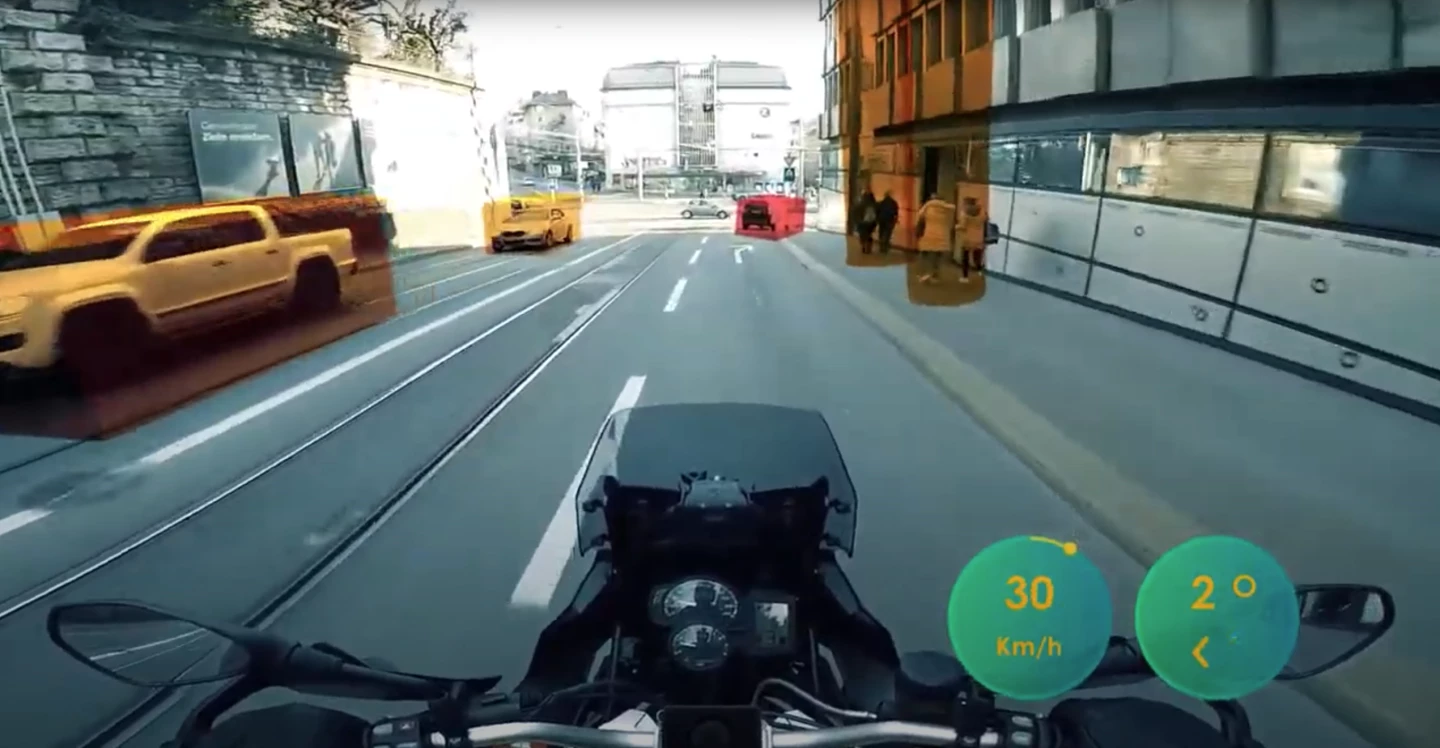The head-up display for motorcyclists: it's the great white whale of the technology world. Over the years, we've seen at least a dozen different attempts to put information into the eyeline of the motorcycle rider, saving us from the horrible dangers of looking down at a speedometer or navigation system.
None have really taken the world by storm. HUDs seem to be very difficult to build into small helmets in a way that doesn't compromise their safety in a crash, some of them are bulky enough to actually compromise the rider's vision, and while their little displays tend to look pretty cool in mocked-up video advertisements, we suspect the majority don't look nearly that good in the flesh.
So it seems to be a very hard thing to do, with relatively minor benefits if you manage to totally nail it. Still, people persist, whipped into a fresh and frothy frenzy every time a new sci-fi movie gets their juices flowing. The latest motorcycle HUD to pop up is the Aegis Rider, a spin-off from a project team at ETH Zurich.
If a typical HUD is difficult to execute, this one's a doozy, because it's an AI augmented reality overlay on the rider's vision. Using cameras, deep learning and object recognition, it aims to detect hazards like pedestrians, other vehicles, bollards and animals, and highlight them in your vision with little colored boxes to make them stand out.
What's more, it's hooked up to mapping systems, and designed to paint the road with an optimal cornering line when you come up to a curve, giving you helpful little tips like "slow down," "lean the bike over a bit more" and such. Oh, and you'll get a nice constant display of your speedo, the current speed limit, navigation prompts and your current lean angle.
As such, this device is considerably larger than a helmet, and requires some bulky gear to be fitted to the bike itself, capable of pulling in vision and mapping data, live-analyzing it much like a Tesla Autopilot system might, re-mapping the resulting prompts from the rider's point of view and transmitting an image to the rider's line of sight.
Let's assume Aegis Rider manages to perfectly achieve this AI/AR-enhanced vision of motorcycling bliss, exactly as shown in the promotional videos – an extremely generous assumption, I'm sure you'll agree. Can anyone else see any problems here?

I'll start: every colored box you put over a car makes it that little bit harder for the rider to see the tiny cues that set off our spidey senses: where the driver's looking, what the pedestrian's dog is up to, whether there's a slight turning of the front tires that might indicate a stationary car is about to pull out into our lane.
And the idea of painting an ideal cornering line when you're out in the twisties... It's hard to imagine how this wouldn't obscure your view of a diesel spill, or a critical bit of loose gravel, or a slippery road repair, or a rut or a dip or a crack or a puddle or a cowpat or a dead wombat or a Maccas wrapper some clown dropped out the window.
I don't know what the roads are like around Zurich, but around here, every corner's its own adventure, and the perfect line is just as often the cleanest, smoothest bit of road as it is the idealized wide-in, narrow-out textbook line that'll be presented here.

So while the techie side of me applauds the effort this team is expending to AI its way to motorcycling nirvana, and marvels at the daunting challenges faced at every step of this project, the biker side of me is involuntarily reaching for a 10-foot pole to not touch it with. I doubt that I'll need it; few of these things seem to make it from the Kickstarter phase into mass production.
Clear vision is the most important motorcycle safety factor a biker's got, and filling that up with distracting flickering lights that literally go over top of the stuff we most need to see? I'm sorry, call me a luddite, but frankly I think this is smarty-pants tech for the sake of itself, and it'll actually make riding more dangerous in the real world.
Not the fun kind of dangerous, either.
Check out a video below.
Editor's note - October 20, 2021: Aegis Rider's Dr. Simon Hecker has reached out to clarify that much of what we're complaining about here is not planned for the final product, and is chiefly shown to demonstrate the system's ability to distinguish objects. Here's an edited copy of his response:
"Hello Loz, first of all, thanks a lot for writing the article about Aegis Rider in New Atlas. You rightly mention that the content shown in the video could be perceived as very disrupting and annoying. We, as motorcyclists, totally agree. So maybe a little bit of clarification.
"This video does not show what the rider will see, but instead was used to illustrate the systems capabilities in a scientific context. It was actually used in our original ETH Pioneer Fellowship application. We do not plan to highlight objects to the rider as shown there ;-)
"As a final product, that we are currently developing, we leave it up to the rider to decide which information he/she wants to see (control via smartphone app), e.g. whether it is simply speed, navigation or speed recommendations when entering a curve too fast, etc. All of this will of course be a lot less intrusive (we are definitely not highlighting random pedestrians or cars and looking for a very minimalist approach to AR). In the end we offer the option to the rider to keep his/her eyes on the road and obtain all relevant information he/she may wants to see."
We'll bring you an updated story on this device's capabilities once we learn more about the production version.
Source: Aegis Rider







